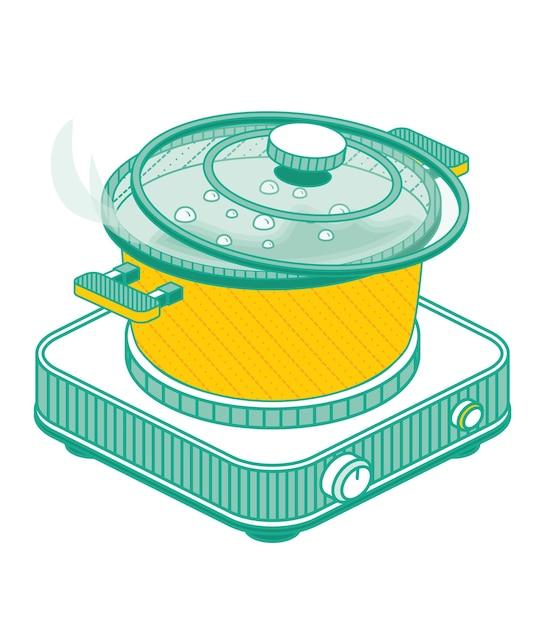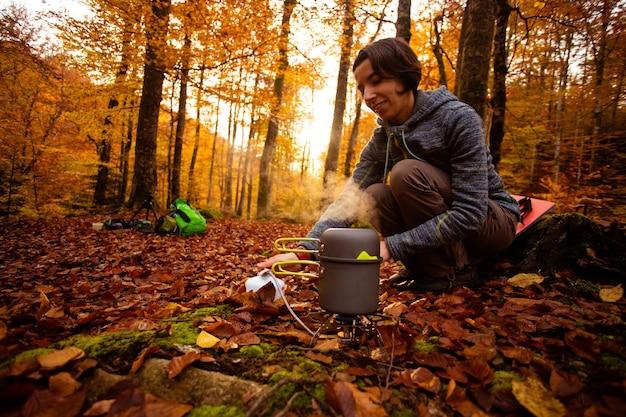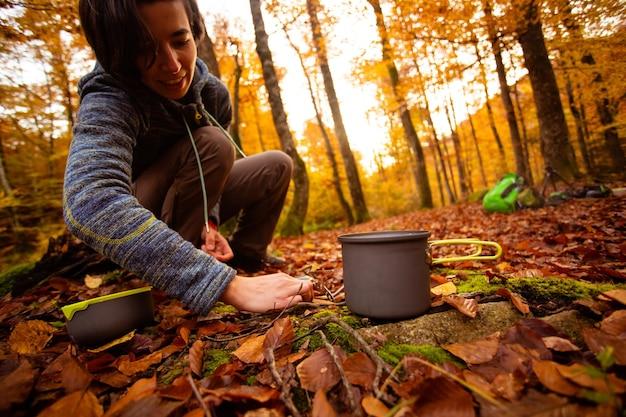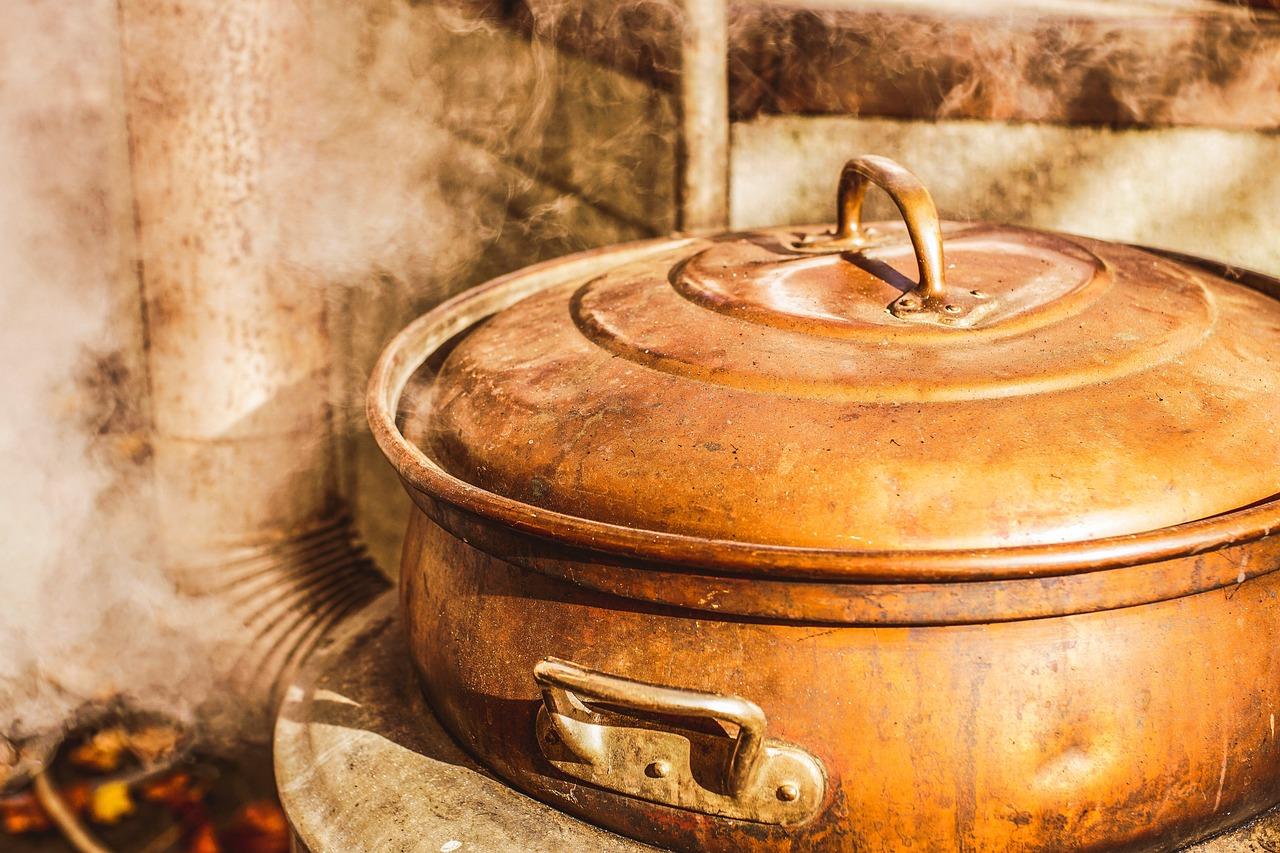If you’ve ever noticed water in the pan under your hot water heater, you might be wondering what’s going on. Is it normal for there to be water in there? Or is something wrong? Don’t worry, we’ve got you covered. In this blog post, we’ll explore why water can accumulate in the hot water heater pan and what steps you can take to address the issue. Whether you’re facing a leaking water heater or wondering about the purpose of the drain valve, this post will provide you with the information you need. So let’s dive in and get your hot water heater back on track!
Water in Your Hot Water Heater Pan: A Watery Dilemma
Trouble Brewing in the Pan
Let’s face it, finding water in your hot water heater pan can be a real buzzkill. It’s like your water heater decided to go for a little swim, leaving you high and dry. But fear not, my water-loving friends! We’re here to dive into this watery dilemma and help you navigate the murky depths of your hot water heater pan.
Spotting the Leak
First things first, how do you even know if there’s water in your hot water heater pan? Well, unless you’ve been moonlighting as a swimming pool inspector, chances are you didn’t plan on finding a mini waterpark in your basement. But if you stumble upon a mysteriously soaked pan underneath your water heater, it’s safe to say you’ve got a leaky situation on your hands.
The Culprits: Three Stooges of Leaks
1. Drip, Drip, Drip
One common culprit for water in the hot water heater pan is a pesky drip. It could be as innocent as a loose valve or a worn-out seal, causing water to slowly seep out. So keep an eye out for these little droplets of mischief.
2. Cracked Tank: A Game of Hide and Seek
Another sneaky villain is a cracked hot water heater tank. It’s like playing a never-ending game of hide and seek, except the prize is a flooded basement. If you suspect a cracked tank, it’s time to call in the professionals before things get out of hand.
3. Pressure Relief Valve Drama
Last but not least, the pressure relief valve can be the third stooge causing mayhem. This valve is designed to release excess pressure and keep your water heater safe and sound. But if it gets a little too trigger-happy, it can flood your pan faster than you can say “ho ho ho!”
Taking the Plunge: Solutions and Precautions
Now that we’ve identified the troublemakers, let’s talk solutions. If you’re dealing with a drip, tightening or replacing the valve or seal might do the trick. However, when it comes to a cracked tank, there’s no band-aid fix. It’s time to say farewell to your old water heater and welcome a shiny new one to the family.
To prevent pressure relief valve drama, make sure it’s properly installed and functioning correctly. Regular inspections, like giving it a little tap to ensure it’s not stuck, can help you dodge any watery catastrophes.
Wrapping Up the Watery Tale
Water in your hot water heater pan is never a welcome surprise, but armed with a little knowledge and a touch of humor, you can tackle this aquatic ordeal head-on. Remember to keep an eye out for the three stooges of leaks, and don’t be afraid to take the plunge and seek professional help if needed. With a little luck, your hot water heater pan will stay as dry as a camel’s hump in the Sahara.
The Hot Water Heater Pan: A Practical Solution
When it comes to our trusty hot water heaters, we often take them for granted, until something goes wrong. One common issue that can arise is the presence of water in the hot water heater pan. Now, before you start panicking and calling a plumber, take a deep breath and let’s explore this phenomenon together.
What’s with the Water
So, you’ve noticed water pooling in your hot water heater pan, and you’re wondering where it’s coming from. Well, fear not, because there’s a perfectly logical explanation. The hot water heater pan is actually a clever invention designed to catch any leaks or drips that might occur. It’s like a safety net for your water heater, preventing any potential damage from spreading.
The Culprit: Leaky Connections
Now that we know why the water is there, let’s figure out where it’s coming from. In most cases, the source of the problem is a leaky connection. It could be a loose pipe fitting, a faulty valve, or even a crack in the tank itself. These little rascals can cause quite a bit of trouble, but luckily, they’re usually easy to fix.
Tackling the Issue
So, what should you do if you find water in your hot water heater pan? First, don’t panic. Remember, we’re in this together. Start by turning off the power to your water heater and shutting off the water supply. This will prevent any further water from entering the tank and causing more damage.
DIY or Call a Pro
Now comes the decision-making time. Should you try fixing the issue yourself or call in a professional? Well, that depends on your level of DIY skills and comfort. If you’re a handy person and have some plumbing knowledge, you can give it a shot. Just make sure to tighten any loose connections or replace faulty parts. However, if you’re not confident in your abilities, it’s best to leave it to the pros. After all, you don’t want to accidentally flood your house while attempting to fix a leak.
Prevention is Key
As the saying goes, an ounce of prevention is worth a pound of cure. The same principle applies to your hot water heater pan. To avoid future leaks and water accumulation, make it a habit to regularly inspect your water heater and its connections. Look out for any signs of corrosion or wear and tear. A little bit of maintenance can go a long way in preventing costly repairs down the line.
Conclusion: Keep Calm and Carry On
So, the next time you find water in your hot water heater pan, don’t fret. Remember, it’s there for a reason – to protect your home from potential water damage. Take a deep breath, assess the situation, and decide whether you want to tackle the issue yourself or call in a professional. And don’t forget to schedule regular maintenance to keep your water heater in tip-top shape. With these tips in mind, you’ll be able to handle any hot water heater pan situation like a pro.
No Hot Water: What to Do When Your Water Heater Leaves You Cold
Is your water heater acting up again? Don’t worry, we’ve got your back! In this subsection, we’ll address one of the most frustrating scenarios: no hot water. It’s like expecting a warm shower and getting sprayed by the cold wrath of a polar bear. Let’s dive right in and find out what could be going wrong.
Checking the Pilot Light: Where’s the Fire?
Ah, the elusive pilot light! It’s a tiny flame that has great power over your water heater’s ability to provide hot water. If your pilot light has mysteriously vanished, you’ll be stuck in Coldville, USA. Fear not, brave homeowner! Follow these steps to reignite the flame:
- Step 1: Location, Location, Location – Locate your water heater and its access panel. It’s often hidden away in some dark and dusty corner, just waiting to vex you.
- Step 2: Peek-A-Boo – Open the access panel and inspect the pilot light area. Look for any missing flames or signs of foul play.
- Step 3: Engaging Your Inner Pyro – Grab a long lighter or fireplace match and carefully relight the pilot light. Caution: don’t singe your eyebrows!
Flushing Your Troubles Away: When Sediment Gets in the Way
Sediment buildup can be a hot water heater’s nemesis, causing all sorts of issues. It’s like your heater decided to throw a beach party and invited the sand to join the fun. Let’s see how we can send those pesky grains packing:
- Step 1: The Power of Shutting Down – Turn off your water heater. Safety first, folks!
- Step 2: Break out the Hose – Attach a garden hose to the drain valve on your water heater. Let it run into a nearby drain or outside, far from prying eyes.
- Step 3: Open the Floodgates – Open the drain valve and watch as the sediment-laden water flows away like a Mississippi mudslide. Tip: grab some popcorn and make it a show!
Water in the Drain Pan: When the Heater Needs a Tissue
Discovering water in your water heater’s drain pan can be a bit like finding a puddle of tears beneath your heater. Don’t fret; it’s not necessarily the end of the world. Here’s what you can do:
- Step 1: Investigate the Crime Scene – Trace the source of the water back to its origins. Is it a leaky pipe, a loose valve, or something else entirely?
- Step 2: Tighten the Screws – Check all connections and fittings for any loose ends. Firmly tighten as needed. Remember, a little elbow grease goes a long way!
- Step 3: Sop It Up! – If the leak persists, place a towel or sponge in the drain pan to absorb the excess water. Hey, towels need some action too!
Hot water heater troubles are never fun, but with our handy guide, you’ll be equipped to face the challenges head-on. Don’t let a lack of hot water dampen your day—reignite that pilot light, flush that sediment, and savor the warmth of a cozy shower once more. Stay hot, my friends!
How to Get Water Out of Your Water Heater Pan
Assess the Situation
Before you start panicking about the water in your water heater pan, take a deep breath and assess the situation. Is it just a small amount of water or a full-blown flood? If it’s just a small puddle, you might be able to handle it yourself. But if it looks like you’re about to host the next Olympic swimming competition in your basement, it might be best to call in the professionals.
Grab Your Trusty Bucket
Assuming the water situation is not too dire, it’s time to grab your trusty bucket. It might not be as exciting as a superhero’s utility belt, but it gets the job done. Place the bucket strategically under the water heater pan, making sure to catch any water that drips down. Remember, aim is important here! You don’t want to miss and end up with a wet sock.
Put on Your Gloves
Now, it’s time to get your hands dirty, well, wet at least. Put on a pair of gloves to protect your delicate skin from the icky water. Nobody wants prune-like fingers! Make sure the gloves fit well and are waterproof because the last thing you want is water seeping through and giving you waterlogged gloves. That’s just adding insult to injury.
Squeeze in a Mini Workout
Getting water out of your water heater pan can be a mini workout in disguise. Take this opportunity to build those biceps and triceps. Get a grip on the bucket handle and do some bicep curls as you transfer the water from the pan to the nearest drain. Remember, it’s all about multitasking and making the most of any situation. Who needs a gym membership when you have a leaky water heater?
Prevention is Key
While you’re dealing with the aftermath of the water in your water heater pan, it’s also a good time to think about prevention for the future. Regularly check your water heater for any signs of leaks or drips. Keep an eye out for any rust or corrosion and take action before it’s too late. Because remember, it’s always better to catch a leaky water heater before it turns your basement into an accidental swimming pool.
Now that you know how to get water out of your water heater pan, you can tackle this plumbing predicament with confidence, strength, and maybe even a hint of humor. So don’t let the water in your water heater pan dampen your spirits – grab that bucket, put on those gloves, and get ready to show that water who’s boss!
Where to Find the Drain Valve on a Hot Water Heater
Introduction
Hot water heaters are an essential part of our everyday lives, ensuring we have a steady supply of hot water for showers, baths, and daily chores. However, like any other home appliance, they require regular maintenance to keep them running smoothly. One crucial aspect of maintaining a hot water heater is knowing how to locate and use the drain valve. In this section, we’ll dive into the depths of your hot water heater to find out where that elusive drain valve is hiding!
The Quest for the Hidden Valve
Once upon a time, when people discovered that their hot water heater needed a good flush, they embarked on a quest to find the drain valve. The journey was not for the faint of heart, but worry not, dear reader, for we shall guide you through this perilous endeavor.
Looking in the Usual Places
When it comes to finding the drain valve, your first instinct might be to check the bottom of the tank. That would make sense, right? Well, I hate to break it to you, but the drain valve is a cunning creature that likes to play hide-and-seek. It often conceals itself in the most bizarre and unexpected locations.
Venturing to the Top
Believe it or not, the drain valve sometimes prefers to take refuge at the top of your hot water heater. This could mean climbing a ladder or standing on your tiptoes, but the reward is well worth the effort. So, grab your torch and prepare to face your water heater head-on!
A Vengeance from the Side
If the drain valve has managed to elude you thus far, fear not, loyal reader! It may have found solace along the side of your hot water heater. Yes, it seems the drain valve has a penchant for strategic positioning. It’s almost as if it enjoys watching us scramble to find it.
Celebrate the Victory
Once you’ve located the drain valve, take a moment to celebrate your triumph over the mischievous creature. But don’t celebrate too long, for the real task lies ahead – draining your hot water heater. That, my friend, is a story for another time.
As we conclude this quest to find the drain valve on a hot water heater, let us remember the importance of regular maintenance to prolong the lifespan of this essential appliance. So the next time you find yourself in hot water with a need for a drain, fear not, for you now possess the knowledge to locate the elusive drain valve. Farewell, dear reader, and may your hot water flow freely!
Pan: The Water Warrior
Is Your Water Heater Pan Overflowing
Have you ever woken up to find your water heater pan filled to the brim with water? Well, fear not, my friend, because you are not alone in this watery ordeal. Many homeowners have faced the same conundrum, and while it may seem like a strange phenomenon, there is actually a logical explanation behind it.
Let’s Dive into the Deep End
First things first, let’s understand what the purpose of the water heater pan actually is. This nifty little contraption is designed to catch any leaks or drips that may occur from your water heater. It’s like a safety net for your floors, protecting them from the potential damage that water can cause.
The Sneaky Culprits
Now, let’s unveil the sneaky culprits responsible for the water invasion in your pan. There are a couple of possible explanations for this aquatic escapade. One possibility is a leaky pressure relief valve. This valve is designed to release excess pressure from your water heater. However, if it’s faulty, it can drip water into your pan, leaving you with a little unintended water feature.
Another potential culprit is a malfunctioning temperature and pressure relief valve (TPR valve). This valve is responsible for maintaining the optimal temperature and pressure inside your water heater. If it’s not functioning properly, it can cause your pan to turn into a miniature swimming pool.
Defeating the Water Menace
So, how do we put an end to this water extravaganza? Well, first things first, you’ll want to inspect your pressure relief valve and TPR valve to see if they are functioning as they should. If you notice any leakage or irregularities, it’s time for a replacement. Just make sure to turn off the power to your water heater before attempting any repairs. Safety first, folks!
Another essential step is to check the drain valve on your water heater. Sometimes, this valve can get stuck, causing water to accumulate in your pan. Give it a good twist or two to ensure that it’s fully closed.
Calling in the Reinforcements
If all else fails and your water heater pan continues to fill up like a stubborn bathtub, it’s time to call in the professionals. A licensed plumber will be able to diagnose the issue and provide you with the appropriate solution. Remember, tackling water-related problems can get pretty slippery, so it’s best to leave it to the experts.
Keep Calm and Pan On
While the sight of your water heater pan overflowing may seem like a nightmare, it’s not the end of the world. By understanding the possible culprits and taking the necessary steps to address the issue, you can regain control over your pan and restore harmony to your home. So, don’t let the water invaders win; fight back and keep that pan dry as a desert!
Can You Still Use Water if Your Water Heater is Leaking
So, your water heater is leaking, huh? Well, before you start panicking and preparing for a wet and wild adventure in your utility room, let’s address the most burning question on your mind: can you still use water if your water heater is leaking?
The Leak Dilemma
Ah, the age-old debate of water versus water leakage. It’s a tough call, really. On one hand, you want to stay hydrated and keep up with your daily shower routine. On the other hand, you don’t want to turn your home into a makeshift swimming pool.
Water Usage Olympics
Let’s conduct a little experiment, shall we? Grab your running shoes and a stopwatch, because we’re about to dive into the Water Usage Olympics! Bust out your shower cap, fill up a glass, and get ready to see just how much water you can use before that leak creates chaos.
The Lifeline of Drip Buckets
If your water heater has sprung a leak, fear not, my friend! Drip buckets to the rescue! Position those trusty buckets strategically under the leak, channeling your inner Bob the Builder. It’s like playing a grown-up version of “Whack-a-Mole,” only instead of excitedly bashing mole heads, you’ll be eagerly emptying buckets of water. Quite the workout, if you ask me.
Conservation Mode Activated
While you might not be able to use copious amounts of water like you’re hosting a pool party in the Sahara, there’s still hope. Embrace your inner environmental warrior and let conservation mode take the stage. Use only what you absolutely need, like a water sommelier expertly tasting and savoring each precious drop.
A Silver Lining
Believe it or not, there is a silver lining to this leaky situation. Think of it as an opportunity for personal growth and development. You’ll become a master of resourcefulness, a cunning strategist navigating the treacherous waters of water conservation. Plus, your biceps will thank you for the impromptu workout from all that bucket lifting.
So, dear reader, while a leaking water heater may throw a small wrench in your daily routine, rest assured that water usage is still possible, albeit with a few adjustments. Embrace the drip buckets, channel your inner Olympian, and become a water conservation superhero. Remember, when life gives you a leaking water heater, make lemonade… or, in this case, make every drop count!
Is There Supposed to Be Water in the Water Heater Pan
So, you’ve noticed a bit of water in your water heater pan and you’re scratching your head, wondering if that’s normal. Before you go diving into panic mode and start calling a plumber, let’s take a closer look at whether there should be water in that pan or not.
Understanding the Purpose of the Water Heater Pan
First things first, let’s talk about the role of this sneaky little pan. The water heater pan, also known as a drain pan, is there to catch any water that may leak from your water heater. It’s like a safety net, ensuring that any unwanted water doesn’t wreak havoc on your floors, furniture, or any other belongings you cherish.
When a Little Water Isn’t a Big Deal
Now, here’s where things get interesting. A small amount of water in the water heater pan can actually be considered normal. You see, your water heater has a temperature and pressure relief valve (TPR valve) that releases excess pressure or hot water to prevent your water heater from exploding like a science experiment gone wrong. Sometimes, a small amount of water may escape through this valve and end up in the pan, which is perfectly fine.
Potential Causes of a Leaky Pan
Of course, it’s not all rainbows and unicorns with water in the pan. If you’re finding a significant amount of water or if it seems to be a recurring issue, then it’s time to get your detective hat on. Here are a few possible culprits to consider:
1. Excessive Pressure:
If the pressure in your water heater is too high, it can cause leaks. This may be due to a faulty pressure relief valve or even an issue with the water pressure coming into your home.
2. T&P Valve Problems:
Sometimes, the TPR valve itself can be the problem. It may be faulty or not properly installed, causing water to leak out.
3. Leaky Pipes:
Let’s not forget that the water in your pan might not even come from your water heater. It could be from a leaky pipe nearby.
4. Condensation:
Believe it or not, the water in the pan may just be condensation. If your water heater is located in a humid environment, it can produce condensation that collects in the pan.
Don’t Dive into Panic Mode Just Yet
Before you frantically dial the number of every plumber in your area, take a deep breath. Start by checking for any visible leaks or signs of damage to your water heater. If everything looks fine and you only have a small amount of water in the pan, chances are you’re in the clear. However, if you’re dealing with a persistent leak or a significant amount of water, it’s time to call in the cavalry – a professional plumber who can diagnose and fix the issue for you.
Remember, an occasional splash in the water heater pan is nothing to lose sleep over. But if you start feeling like you’re rafting through a river every time you approach your water heater, it’s time to take action.
Happy hot water heating adventures!



